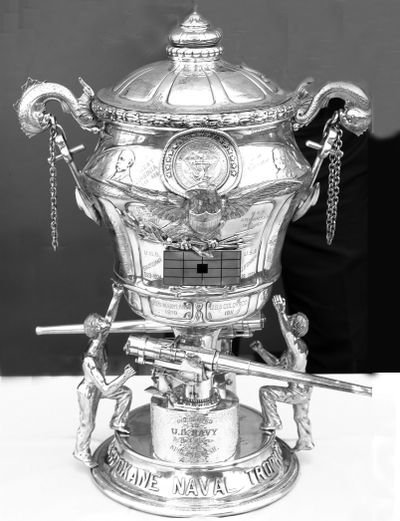Bank robberies and bathtub scuffles: ‘Life Behind the Badge’ chronicles Spokane law enforcement history

In 1949, Spokane police Officer Peder Bakken was seriously injured in an accident on his police motorcycle – so serious that officials at the scene thought he might be dead.
The newly published Volume 4 of a community-based effort to document the history of the Spokane Police Department tells what happened next.
“He was pronounced deceased 20 minutes after the accident,” the book says.
An accompanying photo shows Bakken lying face down on the ground with a sheet over his upper torso.
“Bakken was on his way to the morgue when he came to and was rushed to the hospital,” the book says in telling one of its many stories.
The injured officer spent more than a month in the hospital and another nine months at home recuperating, but he returned to a successful career, retiring in 1966.
Volume 4 is the latest book in a series titled “Life Behind the Badge,” which traces the department’s and the city’s history back to 1881.
The newest installment is on the “Transitional Years, 1944 to 1970.”
It offers a straightforward and dispassionate look at the department as it took on a greater emphasis for public safety, but also covers the heinous crimes and major events that occurred.
Did you know that Ethiopian Emperor Haile Selassie (1892-1975) visited Spokane in 1954? A photo on page 102 proves it.
“Spokane has a real rich history,” said Rae Anna Victor, a member of the Spokane Law Enforcement Book Committee that has produced the four volumes and is working on a fifth volume for the period from 1970 through 1999.
“I think it’s a pretty good history of our town,” Victor said.
The Dishman Bank robbery in 1954 has to rank up there.
An anonymous tip led detectives to a home where they arrested the suspect, an escapee from Colorado, after a scuffle that ended in a bathtub.
The robber broke in and waited inside the bank prior to opening. He forced the manager and bookkeeper to open the vault, where $135,000 was taken.
After the arrest, suitcases full of money were found under the bed, and a stash of 58 rifles and pistols was recovered, proceeds from a string of crimes stretching back to Colorado.
The book shows the 1950 fire at the old Ridpath Hotel in what was described at the time as a “million dollar fire.”
It has pictures of black-and-white safety patrol cars that children had dubbed “skunk” cars because of their distinct white stripes.
“Pigeon-hole parking” was invented in Spokane by brothers Leo and Vaughn Sanders, who erected their first scaffoldlike structure with mechanical lifts in Spokane.
There is also a biography on Gen. Muir S. Fairchild (1894-1950), a Washington native and early military aviator who is the namesake of Fairchild Air Force Base. In 1916, his Washington National Guard unit was sent to the Mexican border area to search for Pancho Villa. He eventually rose to vice chief of staff for the Air Force.
In 1949, several detectives had a bartender put knockout drops into the drink of a man – a “powder monkey” – who had wired himself with dynamite and had threatened to detonate it if a cop came close to him. It worked. He woke up not feeling so well in the city jail.
In 1908, the Spokane Naval Trophy was donated by the citizens of Spokane and Spokane Navy League to recognize top naval marksmanship and later weapons systems proficiency. Photos are contained in the book along with the history of the trophy. The 28-inch high cup was crafted by a Spokane jeweler with 400 ounces of silver and lined with gold. It was valued in 2008 at $4.4 million.
The book is available for $33 at Auntie’s Bookstore, the Northwest Museum of Arts and Culture, Spokane Law Enforcement Credit Union and the Spokane Law Enforcement Museum.
All four volumes are available at a combined price of $104.